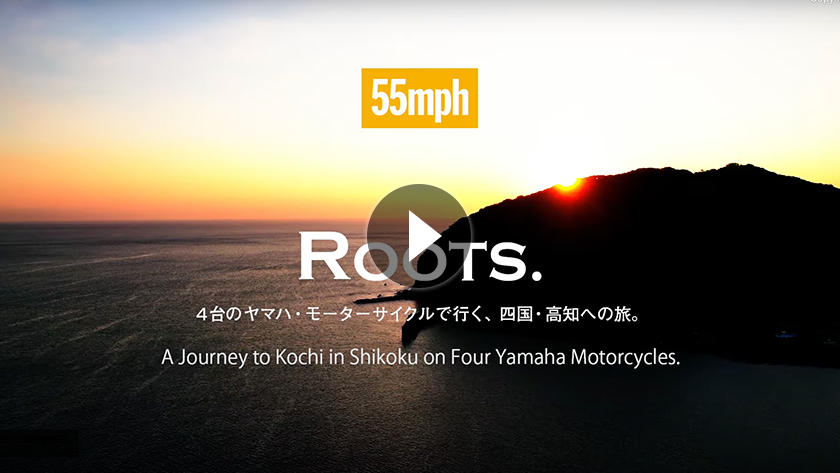55mph - Roots. Vol.02
Rowland Kirishima and Keisuke Kawanishi's grand touring on a Yamaha TRACER9 GT to Kochi for 6days.
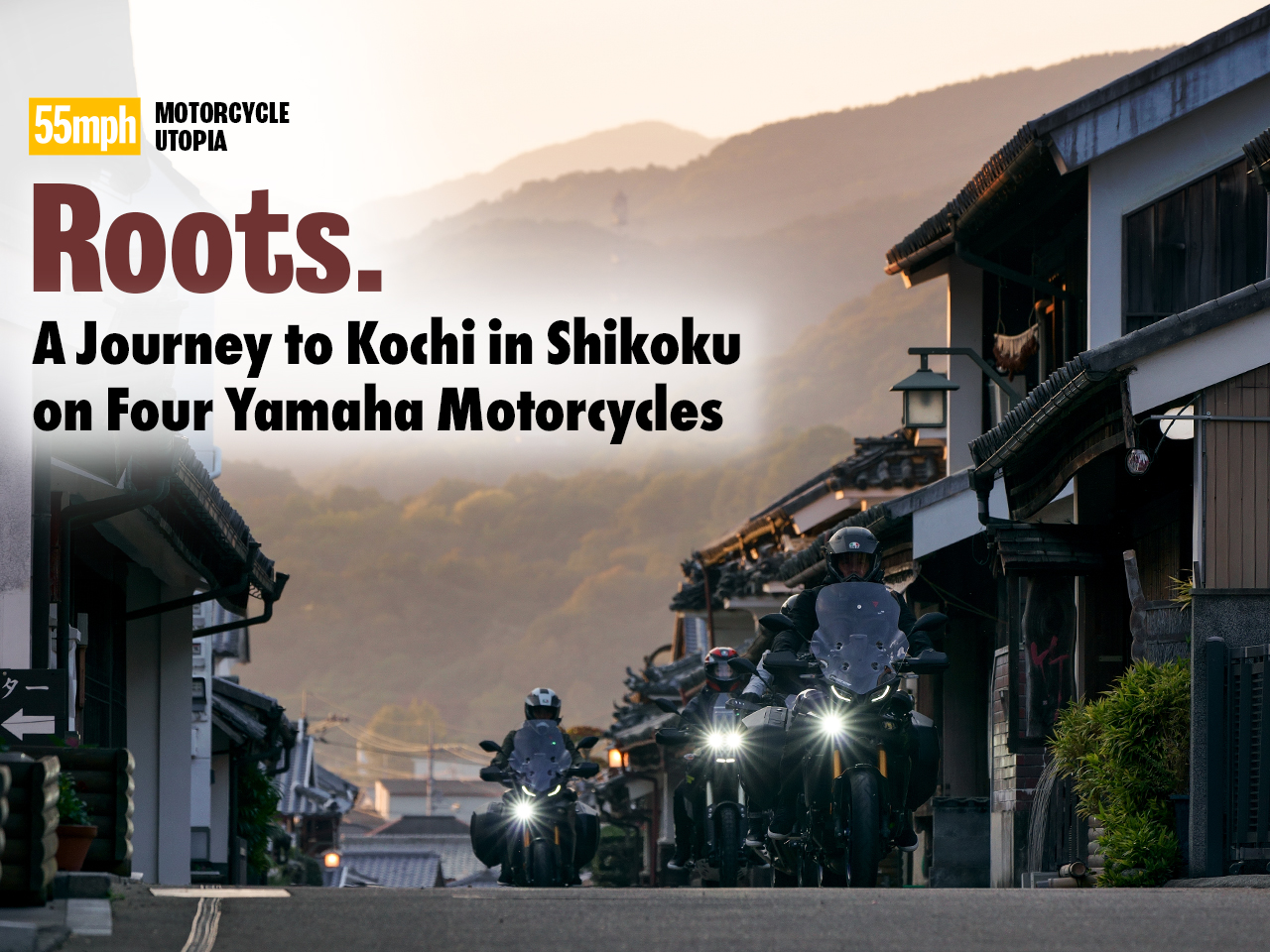
Vol. 2 In Search of Scenes of Old Japan, We Head West
The restrictions the COVID-19 threat has placed on us has generated within just about everyone a longing for the freedom to go wherever whenever we want. With a faint light finally beginning to appear at the end of the long proverbial tunnel, here we are looking to go on a motorcycling adventure, a grand tour from Tokyo to Kochi in Shikoku and back. It’s also a journey of rediscovering our roots as motorcyclists, something that is on the verge of being lost from day after day of being “garaged” due to the pandemic.
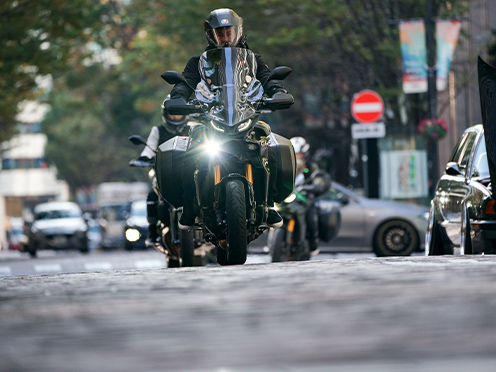
Cruising West at 55 mph
We set off from the Marunouchi business district in Tokyo on a sunny morning in November 2021. It was the start of another new 55mph touring adventure for me together with photographer Rowland ‘Rowly’ Kirishima and two women riders, Reina and Tanya. We would be traveling just over 2,000 km to Tosa in Kochi Prefecture and back over the course of six days. Our first day was a roughly 450 km ride to Kyoto.
Rowly and I are on Yamaha’s Tracer 9 GT sport tourer. It’s based on the MT-09 hyper-naked bike and uses its 888cc 3-cylinder engine, but gains some fairings and other changes for touring duty. In addition, the higher-spec GT version has upgraded suspension front and rear, cruise control, heated grips, full-color TFT LCD displays, and more. The day’s highway-to-highway route along the Tomei, Shin-Tomei, and Meishin Expressways made the Tracer 9 GT the perfect partner for the job. The CP3 engine provides plenty of powerful torque down low but also great pull even at higher revs, giving it a character that boasts the advantages of both 2- and 4-cylinder engines. While riding between 80 and 100 km/h, which is the normal speed range for highway travel in Japan, I was able to enjoy the unique pulse of the triple powerplant.
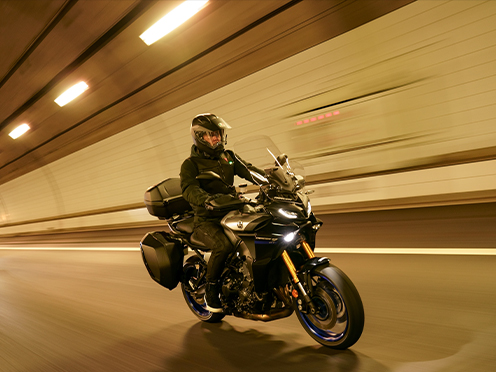
I’d like to borrow some space here to briefly touch on the origins of the 55mph name since it’s the keyword of this long tour as well as the title of the original Yamaha Motor publication from the 1980s. As most know, “miles per hour” is the unit of speed mainly used in the United States and the United Kingdom, and 1 mph converts to 1.6 km/h, so the equivalent of 55 mph is about 88 km/h. Riding the expansive road network of the United States at a somewhat relaxed 55 mph has its own special draw, and the 55mph title was chosen to represent the more relaxed enjoyment of motorcycling that comes at that speed.
After setting off from the city center, we made our way onto Tokyo’s Metropolitan Expressway and headed west via the Tomei and Shin-Tomei Expressways. The route itself was generally easygoing, but even motorcycles with ample wind protection still constantly subject the rider to a certain degree of oncoming air, and all four of us keeping the same pace was obviously not as easy as just driving the whole way in the comfort of a car. So, we stopped frequently for meals and breaks to avoid getting too tired. After all, it was still only the first day.
While riding on the Isewangan Expressway, which runs past Nagoya along the north shore of Ise Bay to connect Aichi Prefecture and Mie Prefecture, we had first-class tickets to a view of a beautiful sunset in the western sky. Since it’s mid-November, the sun falls quite early and by the time we got off the highway in Kyoto, night had completely set in. The four of us rode through the crowded rush-hour streets of Kyoto managing not to get lost and arrived safely at our accommodations for the night. Day one of our 55mph tour was over.
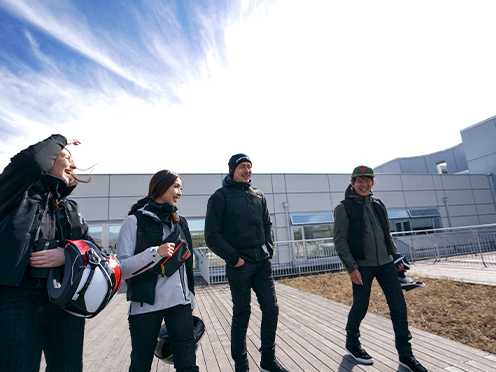
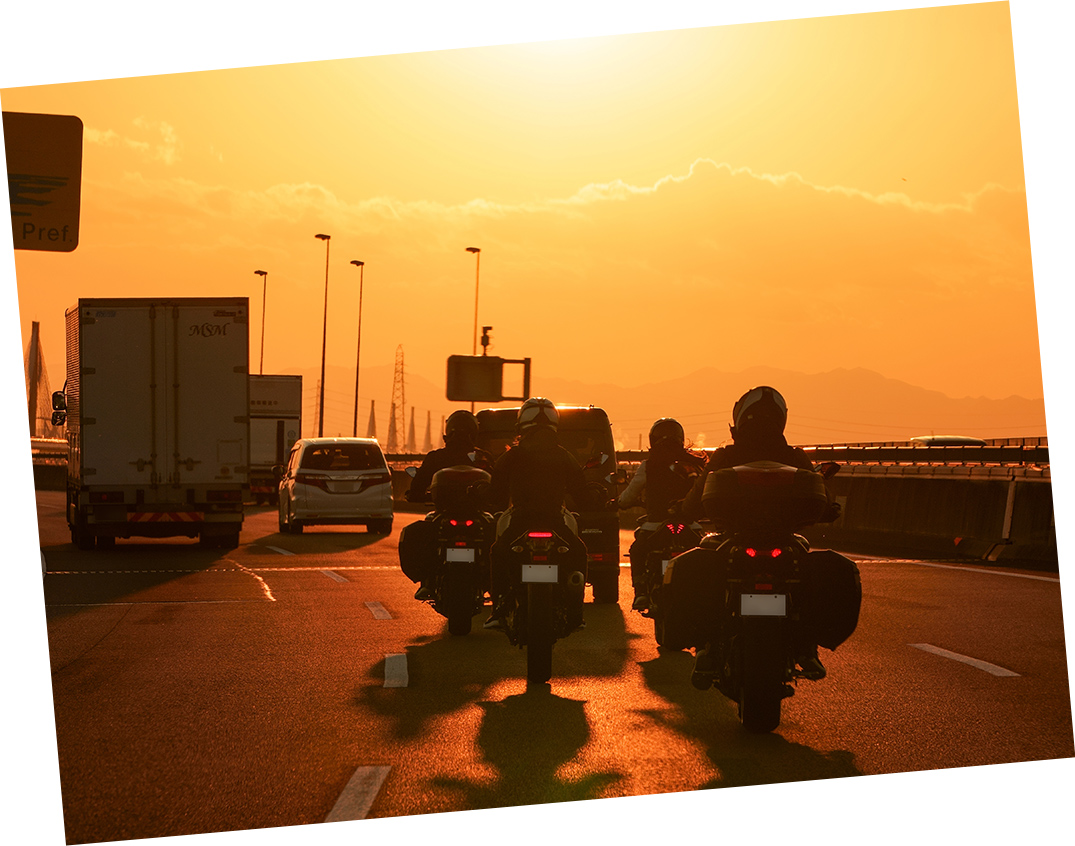
Crossing the World’s Longest Suspension Bridge
We awoke on the morning of the second day and prepared for the day’s course taking us out of Kyoto and across to Awaji Island via the Akashi Kaikyo Bridge. We would then enter Shikoku by crossing the Onaruto Bridge and make our way towards Tosa in Kochi Prefecture on the island’s southern side.
The day’s distance was just under 400 km, making it a little shorter than the first day and we just needed to arrive at our destination by nightfall, so we decided to have a little look around Arashiyama that morning. We crossed the Togetsukyo Bridge over the Katsura River and took a walk through the Arashiyama Bamboo Grove after parking our bikes nearby. With the pandemic relatively settled down at that point, tourists had started to come back and Arashiyama was bustling more than we expected. Rowly has come here a number of times on photography assignments and easily guided us to the best places for pictures. What was surprising for me was how familiar Tanya was with Kyoto. She explained that she visits lots of popular tourist spots across Japan on her own solo motorcycle trips.
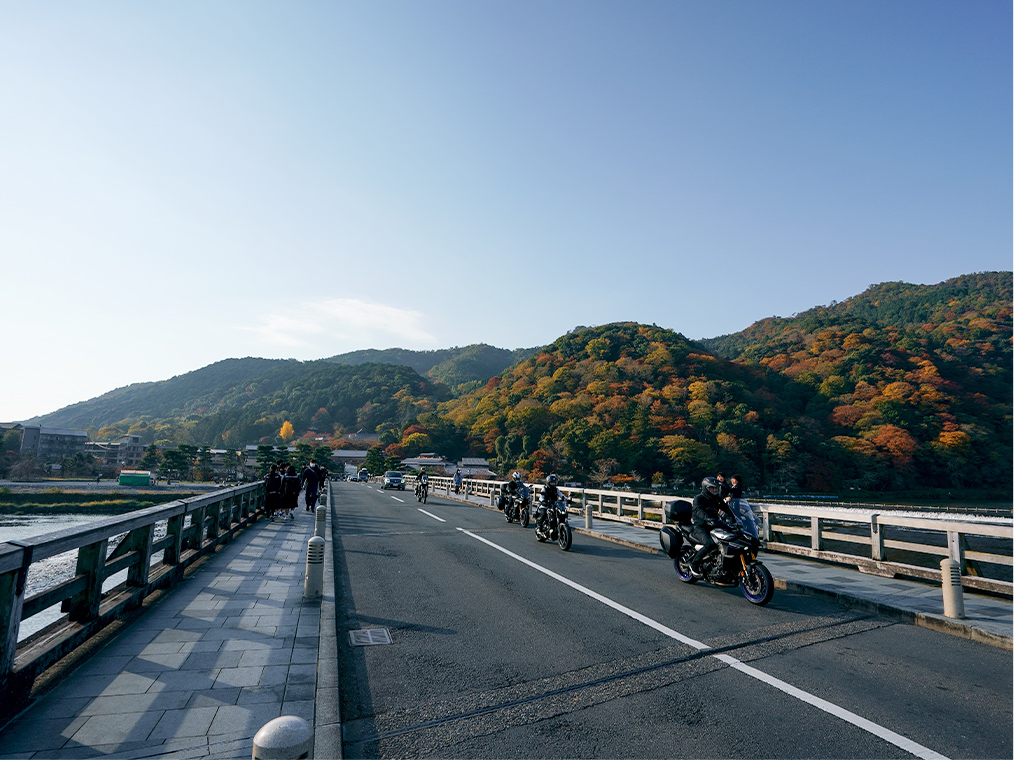
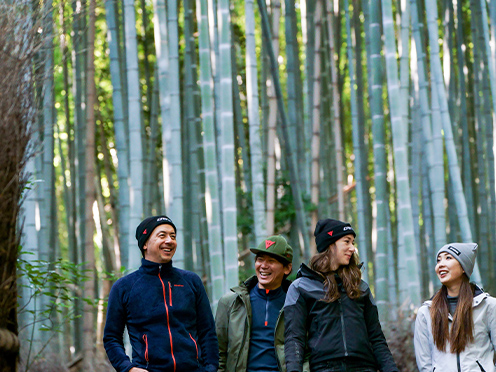
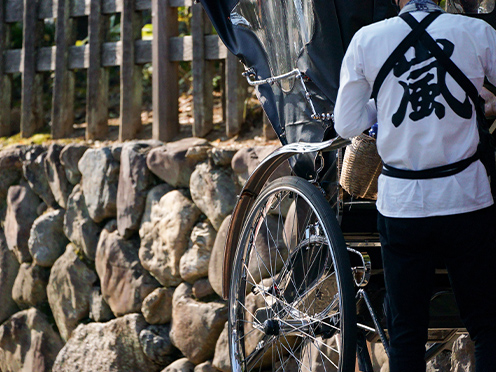
We finished our small detour in about an hour and got back to riding. If we picked up the pace a little, we could reach Shikoku by early afternoon and fortunately, we had sunny skies. The temperature would likely rise during the day, but the morning air was still a little chilly. Still, we weren’t affected by the cold all that much thanks to our gear.
On this trip, we were wearing a complete set of the latest gear from Dainese, with compression underwear and socks, and winter riding gloves and jackets. Their effectiveness in staving off the wind and cold was beyond what I expected and it made me realize you can actually go touring throughout late autumn in comfort if you have good gear on. On top of our jackets, we wore Dainese’s vest-like Smart Jacket, which employs the company’s D-air® airbag technology from MotoGP. The vests have built-in gyroscopes, accelerometers, and GPS and automatically deploy an airbag in the event of a fall or collision to help protect the body from impacts. Of course, you don’t want to find yourself in any situation where it becomes necessary, but the peace of mind afforded from wearing it cannot be understated and it undoubtedly makes a long tour like this one much more comfortable.
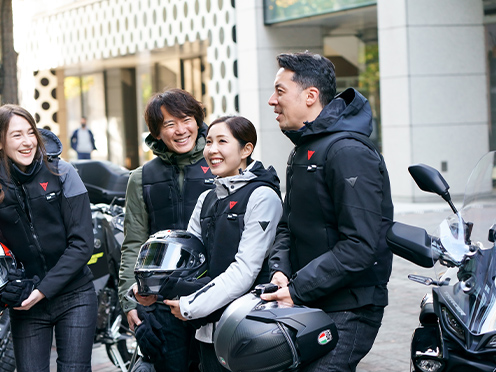
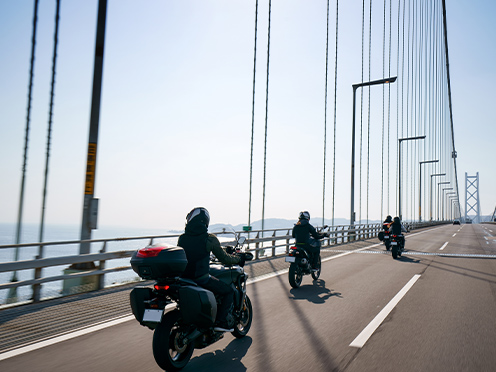
After riding down the Meishin and Hanshin Expressways, we crossed the Akashi Kaikyo Bridge. This is the longest suspension bridge in the world at 3,911 meters in length. The bridge sits quite high above the water—the towers that support the cables are nearly 300 meters high!—and as I’m not great with heights, it was a heart-stirring experience for me to cross it on a motorcycle. In stark contrast, Reina and Tanya looked supremely confident as they rode across the nearly 4 km bridge. The excellent performance and stability of the Ténéré 700 Tanya was riding really impressed me when touring from Portugal to Morocco two years ago, and she seemed to have fully tapped into that potential in just a day and a half in the saddle.
On the other hand, the MT-07 Reina was on has the draws of being light and agile as it’s a naked bike, but as one would expect on a tour where much of the ride is on the highway, things typically become harder on the rider. However, Reina’s bike was so stable across the bridge that there actually didn’t seem to be much at all to worry about there. All of us in the group have different levels of riding experience, but there was a clear sense of unity among us as we rode across the Akashi Kaikyo Bridge in formation.
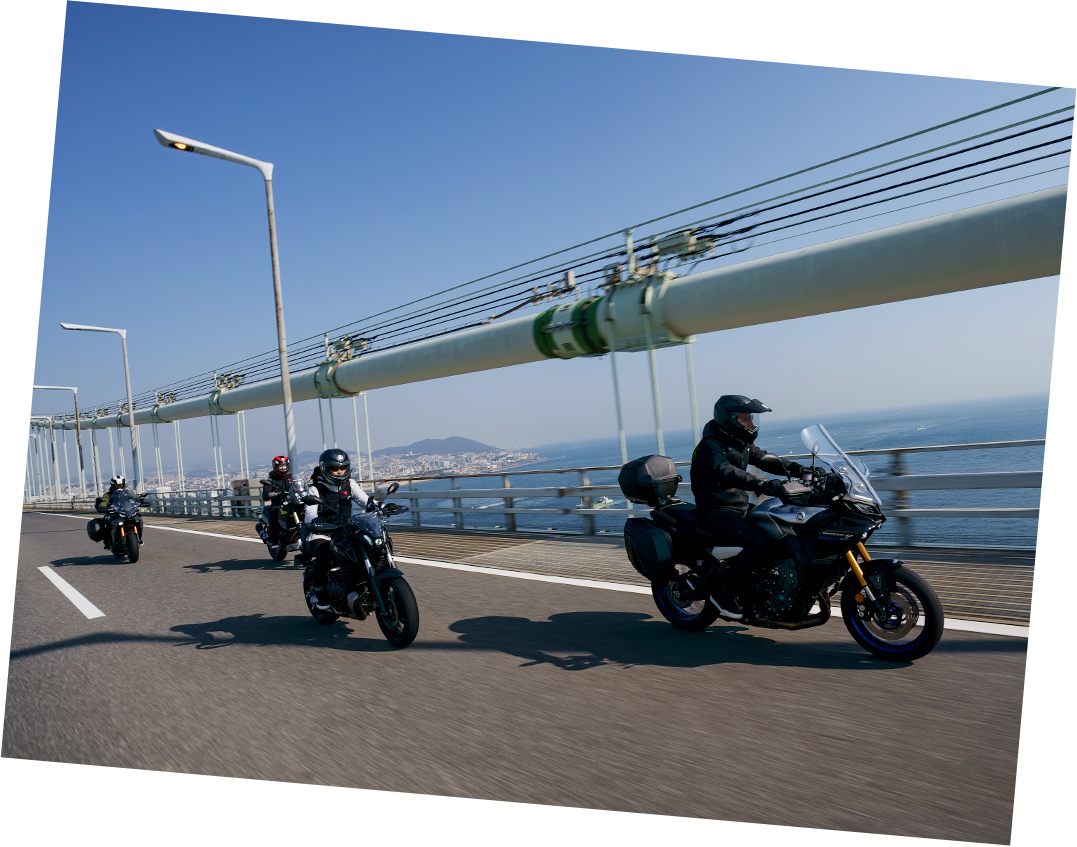
Going Back in Time
After crossing the bridge, we stopped for lunch and a short break at the Awaji Service Area, a highway rest stop overlooking the Akashi Strait. Once we got started again, we continued along the highway and crossed the length of Awaji Island from north to south to the Onaruto Bridge. This bridge passes over the Naruto Whirlpools and was our final landmark before reaching Shikoku, the smallest of Japan’s major islands. I’ve been here several times before, but this was the first time I had made the trip by land and on a motorcycle. There are many ways to travel places, but there’s a special feeling of accomplishment when you finally arrive somewhere by motorcycle having kept your senses sharp along the way. It’s one of the real joys of going touring.
Before heading to our lodgings in Tosa, there was an interesting place we wanted to visit along the way: the historical townscape and streets of Udatsu in the city of Mima in northwestern Tokushima Prefecture. The buildings lining the streets are just as they were in old Japan, from the Edo period (1603–1867) and Meiji period (1868–1912) through to the Taisho and early Showa periods (1912–1945). Considering the purpose of this trip was to rediscover our roots and the charm of Japan, we were dead set on seeing the district in person.

We got off the highway and ended up getting a little lost, but we managed to arrive in Udatsu just as the sun slowly began to tilt westward. Udatsu (lit. “rabbit structure”) refers to the small protruding roofed walls erected on both sides of some Edo-period houses. Originally, they were intended as a firewall to prevent flames from spreading from house to house, but they gradually took on a more decorative role and became a symbol of wealth and success. Because it was not possible to build a house with udatsu unless one was wealthy, it gave rise to the Japanese idiomatic expression of udatsu ga agaranai (lit. “unable to raise/construct an udatsu”), which means “No hope of getting ahead.” This area once flourished as the castle town of Waki Castle and was also a transportation hub, so the udatsu lining its streets were clear symbols of how it got ahead just fine back in its heyday.
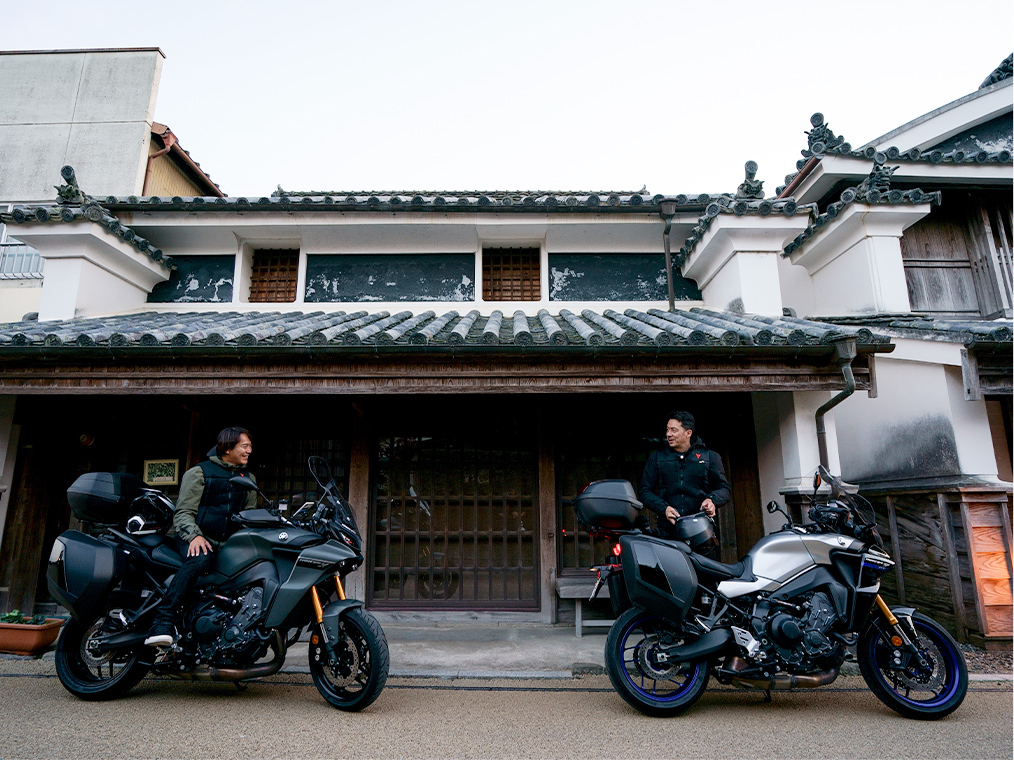
Because it was a weekday, late in the afternoon, and there were few tourists around, we forgot all about the clock and clicked off photo after photo in the streets as if we had gone back in time on our motorcycles. When comparing Japanese motorcycles to offerings from Europe and other overseas brands, I sometimes feel that their designs, color schemes, and the like give them somewhat modest looks. But when you put a Japanese bike in a traditional Japanese setting like this, there’s something about it—the Japanese DNA in them or what have you—that makes it blend in effortlessly.
Before we knew it, the sun was about to set and we hurriedly got back on the steel horses of our own time and set course to our tour’s main destination: Tosa.
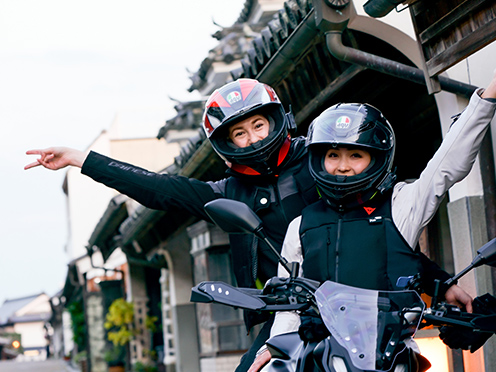
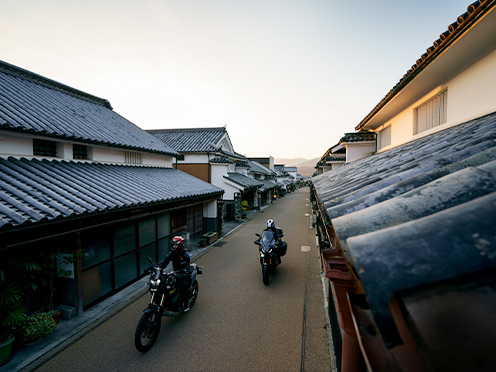

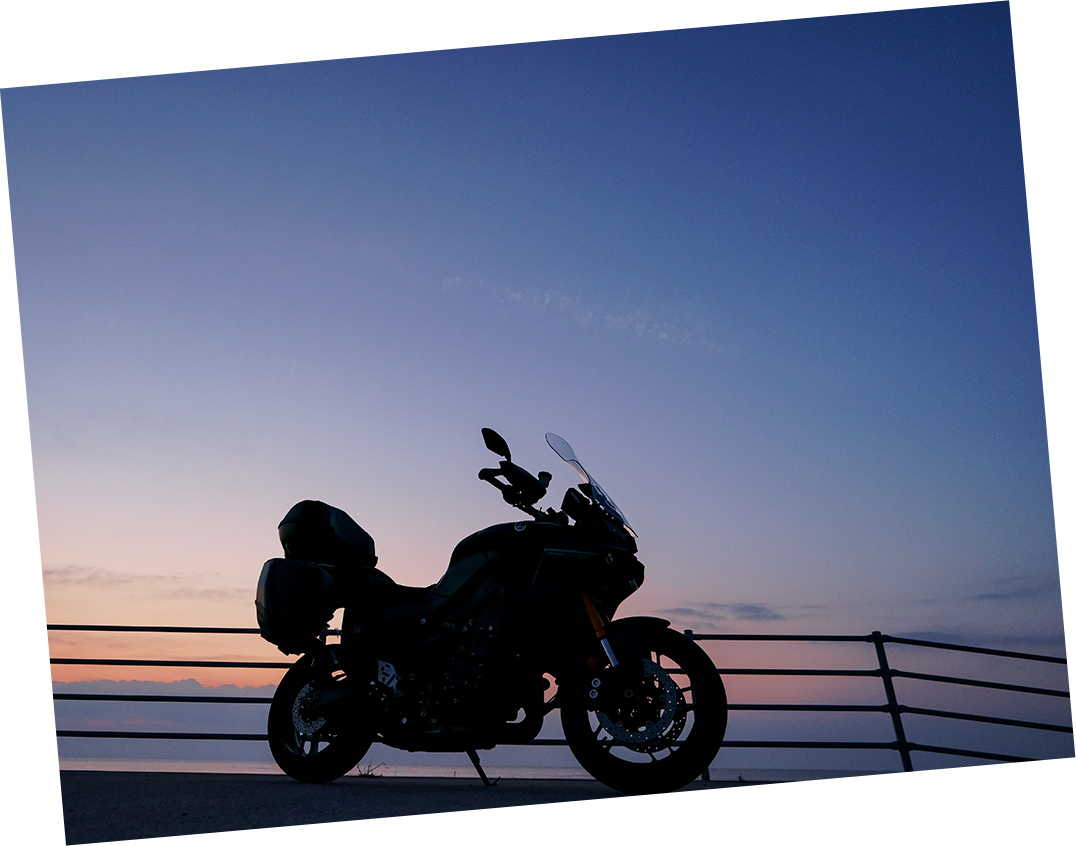
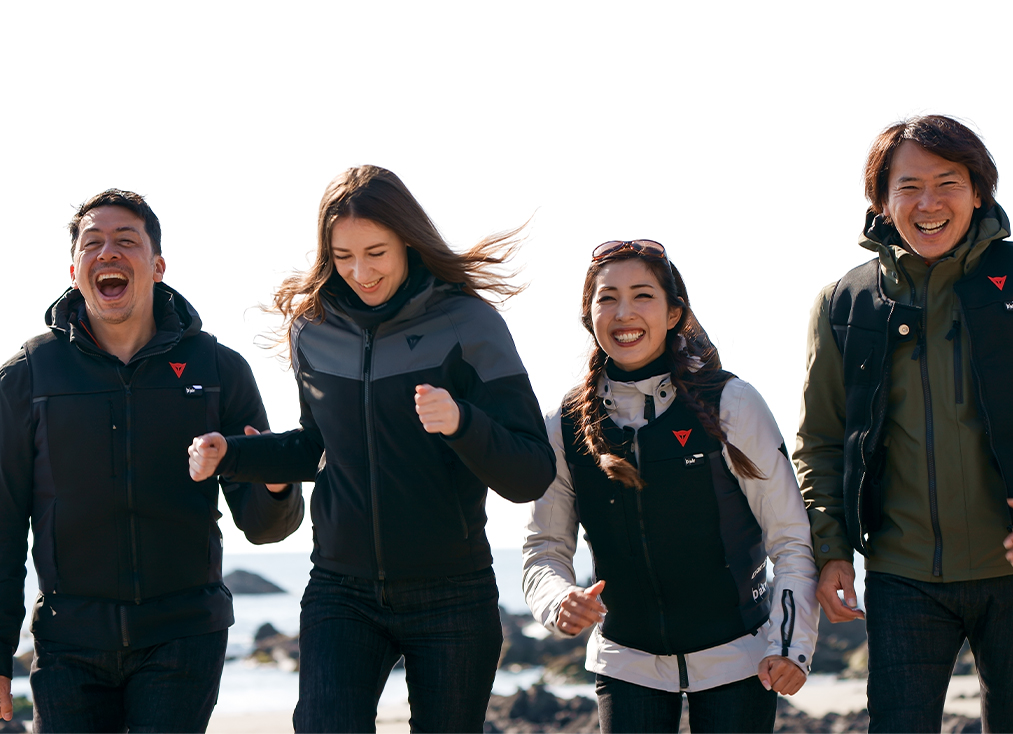


Rowland Kirishima
Born in 1968. Graduated from New York University College of Art - Department of Photography - and became a photographer. He is active mainly in magazines and advertising photography. Currently, he is a technical advisor for CyberHuman Productions. Rowland developed an interest with motorcycles during his school days and participates in races in both on & off-road competition. He also competed in the Dakar Rally in 2007.
Keisuke Kawanishi
Born in 1967. Graduated from Waseda University and become an editor at the NAVI magazine after working for an advertising agency. He started motorcycle magazines "MOTO NAVI" and "NAVI CARS” working as the senior editor.
He currently works as a freelance motor journalist, editor and producer.
